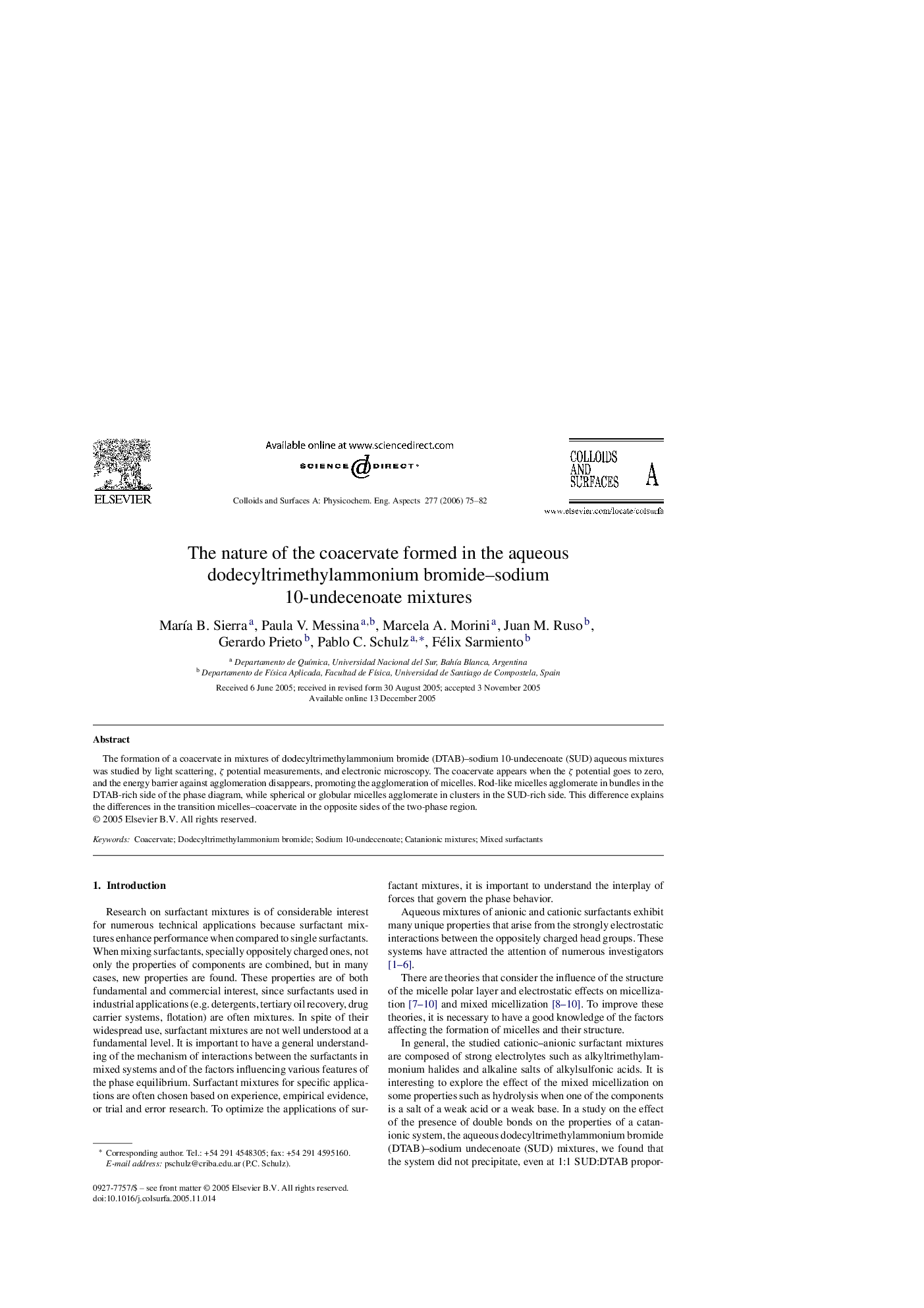| Article ID | Journal | Published Year | Pages | File Type |
|---|---|---|---|---|
| 598579 | Colloids and Surfaces A: Physicochemical and Engineering Aspects | 2006 | 8 Pages |
Abstract
The formation of a coacervate in mixtures of dodecyltrimethylammonium bromide (DTAB)–sodium 10-undecenoate (SUD) aqueous mixtures was studied by light scattering, ζ potential measurements, and electronic microscopy. The coacervate appears when the ζ potential goes to zero, and the energy barrier against agglomeration disappears, promoting the agglomeration of micelles. Rod-like micelles agglomerate in bundles in the DTAB-rich side of the phase diagram, while spherical or globular micelles agglomerate in clusters in the SUD-rich side. This difference explains the differences in the transition micelles–coacervate in the opposite sides of the two-phase region.
Related Topics
Physical Sciences and Engineering
Chemical Engineering
Colloid and Surface Chemistry
Authors
María B. Sierra, Paula V. Messina, Marcela A. Morini, Juan M. Ruso, Gerardo Prieto, Pablo C. Schulz, Félix Sarmiento,
